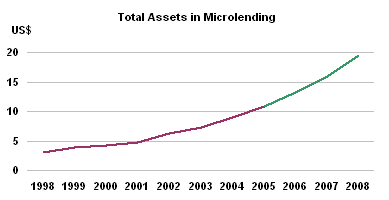Microfinance: What Role for Commercial Banks?
Abstract
Paris, France September 28, 2005 ?Celent estimates that the microlending market will reach US$20 billion by 2008. In a new report, " ?", Celent analyzes the microfinance industry and provides detailed information on microfinance stakeholders. Microfinance refers to products and services designed for low-income entrepreneurs and provided by microfinance institutions (MFIs). "The microfinance industry is still in its infancy, and only 10% of MFIs are profitable. The main challenges for MFIs are attaining profitability, capacity building, diversification of products and services, and transparency," says Perrine Fiorina, Celent analyst and co-author of the report.
Better know-how, technology, greater access to funds, and enhanced capacity make commercial banks the most qualified to meet the untapped demand of microentrepreneurs. "More and more commercial banks are interested in entering the microfinance market, which has proven to be profitable. For instance, the Grameen Bank, which only offers microfinance products and services, achieved a loan recovery rate of 98.95% and made a net profit of $6.53 million in 2005. Thus, commercial banks can see microfinance as a business opportunity and a way to attract new customers," adds Fiorina. Commercial banks have several ways to get involved in microfinance, from the creation or participation in a microfinance investment fund, to the creation of a special internal unit. "Partnerships between commercial banks and MFIs will be the key to success because they allow partners to share experiences, knowledge, and responsibilities," says Fiorina. Profitability, diversification of products and services, and outreach can be done more quickly using new information and communication technologies. The computerization of MFIs associated with an Internet connection, the implementation of MIS, and accounting software could make great headway in increasing transparency. "Transparency and profit-motivated management will attract private investors to the microfinance sector, which demonstrates a high repayment rate and good profitability. In two years, from 2002 to 2004, the foreign investment in microfinance will have experienced a 300% growth rate from 2002 to 2004 to reach US$1.78 billion. This trend should accelerate as MFIs increase their level of transparency and management responsibility," confirms Axel Pierron, Celent analyst and co-author of the report. The report provides clear strategic recommendations on penetrating the microfinance industry according to geographic region, financial institutions structure, product range, expected ROI, etc. The 37-page report contains 10 figures and 4 tables. |
of Celent's Retail Banking research service can download the report electronically by clicking on the icon to the left. Non-members should contact info@celent.com for more information. |
|


